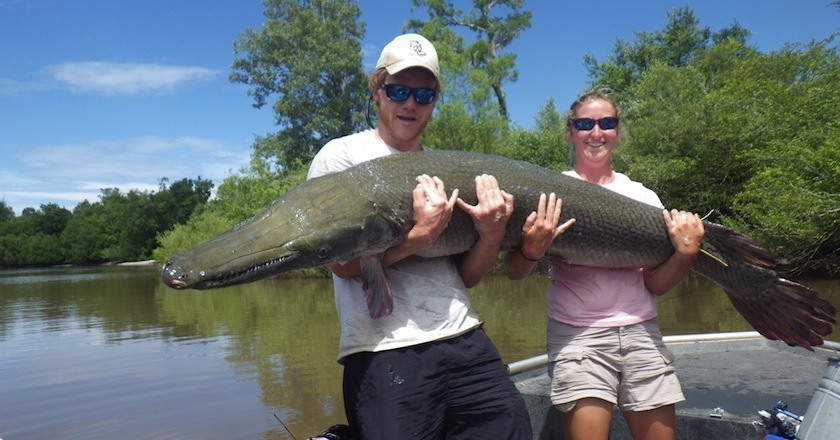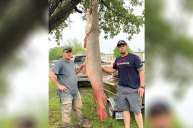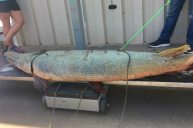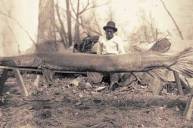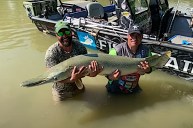The Texas Parks and Wildlife Department issued an announcement, which includes a proposed drawing system for harvesting large alligator gar.
Last week, we published an article regarding Texas' proposal to increase protections for the state's largest and oldest freshwater fish, the alligator gar. This morning, however, TPWD made an official announcement, which provided a more detailed summary of the proposed regulations.
Wildlife officials will vote on the proposal March 20 at the Texas Parks and Wildlife Commission meeting in Austin.
The proposal includes four new regulations, which intend to bolster alligator gar populations, primarily by protecting larger breeding-age fish.
The first includes a 4-foot maximum length limit on the Trinity River, specifically between the I-30 bridge in Dallas and the I-10 bridge in Chambers County, including the East Fork up to the dam at Lake Ray Hubbard. Anglers and bowfishermen wouldn't be able harvest any fish over the limit, although catch-and-release would still be permitted.
"The TPW Commission has communicated to us that they would rather, out of an abundance of caution, act proactively to further limit harvest of older, mature alligator gar while populations are in relatively good shape," Craig Bonds, TPWD Inland Fisheries Director said in the press release. "The 4-foot maximum would conserve these larger fish and redirect harvest towards younger, more abundant smaller fish. It also ensures there are plenty of large, recreationally valuable fish remaining for angler to catch and release, which attracts anglers from around the world."
The next proposed regulation implements a random drawing system, which would select an unspecified number of anglers to legally harvest one gar over the 4-foot limit per year from the Trinity River.
"The drawing is similar to what other states like Arkansas are doing to offer an opportunity to keep one large gar while allowing the Department to manage annual harvest to avoid a population decline and depletion of the large alligator gar," Bonds said. "Alligator gar could be harvested by lawful means, including pole-and-line or by bow fishing equipment."
The third proposed regulation prohibits nighttime bowfishing (30 minutes after sunset to 30 minutes before sunrise) with lawful archery equipment, which includes crossbows. This regulation would apply to the entire state.
This is likely the most contested regulation TPWD proposed, as nighttime bowfishing for alligator gar has become extremely popular in Texas. However, TPWD officials believe this would have a significant impact in combatting over-harvesting issues.
"The TPW commission has concerns about the rapid evolution of technology and equipment used to target large alligator gar," Bonds said. "Prohibiting nighttime bowfishing for alligator gar is an additional proactive measure that would be taken to protect populations from over-harvest."
The final proposed alligator gar fishing regulation—also applying statewide—requires anglers and bowfishermen to report any harvest of an alligator gar with 24 hours, which they'd be able to do online or through an app.
The current one-fish-per-day bag limit rule would continue everywhere in Texas except for the Falcon International Reservoir, which is currently boasting an especially healthy alligator gar population. There, anglers are allowed a daily bag limit of five fish and a possession limit of 1o.
Stay tuned as we continue to update this story.
NEXT: REMEMBERING 'PIG NOSE,' THE 10-FOOT, 700-POUND STURGEON
WATCH
